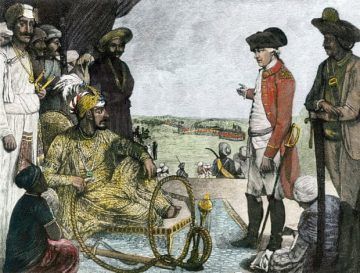Maya Jasanoff in The Guardian:
 About a century ago, a series of giant murals was unveiled in the Palace of Westminster depicting the “Building of Britain”, which bounded in eight set-pieces from King Alfred’s long-ships beating back the Danes in 877 to bewigged parliamentarians presenting Queen Anne with the articles of Union in 1707. The penultimate scene travels to India in 1614, where the Mughal emperor Jahangir receives an ambassador from King James I, on a mission to promote trade with the newly chartered English East India Company.
About a century ago, a series of giant murals was unveiled in the Palace of Westminster depicting the “Building of Britain”, which bounded in eight set-pieces from King Alfred’s long-ships beating back the Danes in 877 to bewigged parliamentarians presenting Queen Anne with the articles of Union in 1707. The penultimate scene travels to India in 1614, where the Mughal emperor Jahangir receives an ambassador from King James I, on a mission to promote trade with the newly chartered English East India Company.
From the hindsight of the 1920s, this embassy looked like a key step in the building of a British imperium that would end with Britain’s monarchs as India’s emperors. But the arrival of the British in India in the early 1600s looked very different at the time – and from the other side. A contemporary painting by the Mughal master miniaturist Bichitr shows a supersized Jahangir on his throne, bathed in a halo of blinding magnificence. He hands a Qur’an to a white-bearded Sufi, a pious gesture that doubles as a majestic snub: pressed into a lower corner is none other than James I, an overlooked supplicant, depicted in three-quarter profile, “an angle reserved in Mughal miniatures for the minor characters”.
More here.
